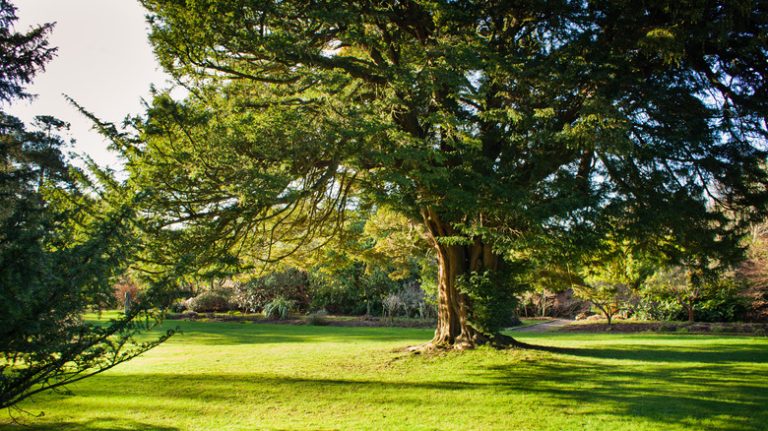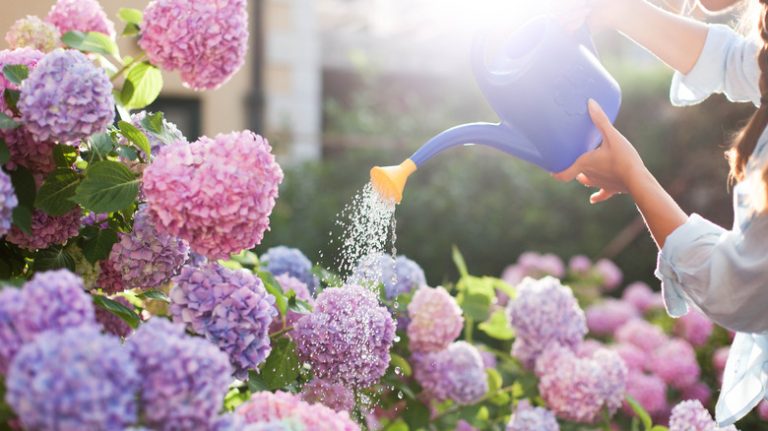The Oleander, also known as Nerium, is a shrub or small tree that is native to the Mediterranean region. It is most commonly known for its white flowers, although you can also find varieties with pink or other colorful flowers. The white flowers are petite and bright, reaching a length of about 2-3 inches. The Oleander is a true showstopper in any garden or landscape.
One of the characteristics that makes the Oleander so popular is its ability to tolerate a wide range of growing conditions. It can thrive in high winds, poor soils, and even in areas with high pollution levels. The Oleander is also very tolerant of drought and can survive with minimal water once established. However, it does require a good amount of sunlight in order to produce its stunning flowers.
Although the Oleander is a beautiful plant, it is important to exercise caution when handling it. The entire plant, including the leaves, stems, bark, and root, is poisonous if ingested. This is especially important to keep in mind if you have pets or small children who may be tempted to chew on the leaves or flowers. If you do decide to prune or handle the Oleander, be sure to wear gloves and wash your hands thoroughly afterwards.
If you are considering planting an Oleander, there are a few things to keep in mind. It is best to plant them in USDA hardiness zone 8 or higher, as they are not very tolerant of frost. Additionally, they prefer well-draining soil and should be pruned regularly to maintain their shape and promote healthy growth. Oleanders can be planted in the ground or in containers, making them a versatile option for any garden or landscape.
In conclusion, the Oleander is a stunning plant with its white flowers and shiny, leathery leaves. It is a versatile shrub that can thrive in a variety of growing conditions, but it does require caution due to its toxic nature. Whether you are looking for a low-maintenance addition to your garden or a showy centerpiece, the Oleander is sure to impress.
Nerium oleander
Nerium oleander, commonly known as oleander, is a leathery evergreen shrub or small tree that belongs to the family Apocynaceae. It is appreciated for its colorful flowers, including the white variety, and its attractive foliage.
The oleander plant can be pruned to maintain a desired size and shape. It is drought-tolerant and can withstand high temperatures, making it suitable for growing in arid regions. Although it is commonly planted for its decorative purposes, oleander is also used for medicinal solutions. It has been used as a traditional remedy for various ailments, including diabetes and heart disease.
When planting oleanders, it is important to consider the plant’s characteristics. They prefer well-drained soils and require full sunlight to thrive. Oleanders can tolerate a wide range of soil types and are also known for their tolerance to wind and pollution.
One should be cautious when handling oleanders, as all parts of the plant are highly poisonous if ingested. The sap can cause skin irritation, and even coming into contact with the bark or leaves can be harmful. It is advised to wear protective gloves when pruning or handling oleanders.
In terms of growth, oleanders can reach a height of up to 20 feet, although dwarf varieties are also available. They produce showy and fragrant flowers that attract bees, butterflies, and other wildlife. The flowers bloom from spring through fall, adding a bright splash of color to the landscape.
Oleander is a popular choice for foundation planting, as it can provide privacy and add beauty to the landscape. It can also be grown in containers, making it a versatile option for both small and large gardens.
Although oleanders are generally low-maintenance plants, they can be susceptible to certain pests and diseases. Common problems include scale insects, aphids, and leaf spot. Regular monitoring and proper care can help maintain the health and vitality of oleanders.
In conclusion, Nerium oleander, or oleander, is a beautiful and versatile plant with attractive foliage and bright, colorful flowers. It is a popular choice for gardens and landscapes, and its characteristics make it suitable for a wide range of climates and soil types. However, it is important to handle oleanders with caution due to their toxic nature.
Source: UF/IFAS Gardening Solutions
Plant calendar
When it comes to growing oleander white flowers, it’s important to have a plant calendar to keep track of important tasks throughout the year. This calendar will help you stay on top of planting, caring for, and maintaining your oleander plants.
In the spring, it’s time to plant oleanders. Choose a sunny spot in your garden with well-draining soil. Oleanders prefer full sunlight, but they can tolerate some shade. Make sure to dig a hole that is twice as wide and just as deep as the root ball of your plant. Once planted, water it well and make sure it gets enough sunlight.
Oleanders are known for their large, leathery, and toxic foliage. In the summer, these shrubs produce beautiful clusters of white or pink flowers that give off a sweet fragrance. Make sure to water your oleanders regularly, especially during dry spells, and fertilize them every two to three weeks with a balanced fertilizer.
In the fall, oleanders can be pruned to maintain their shape and promote new growth. Remove any dead or damaged branches, and trim back any excessively long stems. This will help your oleander to stay healthy and produce more flowers in the following season.
One of the most common problems with oleanders is pests. Keep an eye out for pests like aphids, mealybugs, and scale insects. If you notice an infestation, use appropriate insecticides or organic solutions to control the pests. Be sure to follow the instructions on the label and apply the treatment as directed.
Although oleanders are toxic to humans and pets, they are relatively low-maintenance plants. However, if you have children or pets that may come into contact with the plant, it’s important to be cautious. The sap, leaves, and flowers of oleanders can be poisonous if ingested.
Oleanders can be grown in containers as well. This is a great option if you have limited space or want to have more control over the plant’s environment. Just make sure to choose a large enough container, use well-draining soil, and provide regular water and sunlight.
In colder regions, oleanders may not be able to withstand frost. If you live in an area with cold winters, it’s best to bring your oleander indoors or provide protection, such as mulching, to help the plant survive the winter.
In summary, having a plant calendar for your oleander white flowers can help you keep track of important tasks throughout the year. From planting in the spring to pruning in the fall, caring for and maintaining your oleanders can be a rewarding experience. Just be sure to be cautious of their poisonous nature and take appropriate measures to protect yourself, children, and pets.
Source: Extension Nursery Library – a state-by-state directory of solutions to problems found in white, oleander, poisonous, plants, wildlife
Nerium and wildlife
When it comes to the Nerium plant, commonly known as oleander, it is important to be aware of its characteristics and how it affects wildlife. Although oleander is a beautiful and commonly pruned plant, it is highly poisonous and can be harmful to both humans and animals.
The Nerium plant is well-adapted to survive and grow in a variety of conditions. It can thrive in full sunlight, but it can also tolerate some shade. Additionally, it can grow in a wide range of soil types, from sandy to clay-based soils. This makes it a versatile plant that can be planted in gardens or even in containers.
The oleander plant is known for its white, pink, or red flowers, depending on the variety. The dwarf variety, called “petite,” is also popular due to its smaller size and attractive pink flowers. The flowers of the oleander are large and provide a colorful and fragrant display when in bloom.
One important thing to note about oleanders is that all parts of the plant, including the leaves, stems, flowers, and roots, contain a toxic substance called oleandrin. Even the smoke from burning oleander can be toxic. Because of this, it is crucial to handle oleander plants with caution and avoid exposing them to children and pets.
Although oleanders may attract wildlife with their flowers and fragrance, it should be noted that they can be harmful to animals if ingested. Animals such as deer, rabbits, and birds generally avoid eating the plant due to its toxic nature. However, some wildlife species, like senecio seedeaters, may feed on the oleander fruit without any issues. It is important to note that the fruit of the oleander is also toxic.
If you find wildlife within close proximity to oleander shrubs, it is advisable to take caution and ensure that they are not accessing or consuming any part of the plant. Providing alternative food sources and planting non-toxic plants nearby can help deter wildlife from targeting the oleander.
In certain states, oleanders are considered invasive and should be avoided, as they can outcompete native plant species and negatively impact local ecosystems. Always check with your local library or nursery to see if oleander is a problem in your area.
| Characteristics | Solutions |
|---|---|
| The oleander shrubs can reach a height of up to 20 feet | Regular pruning can help control the growth and keep it at a manageable height |
| The plants have long, lance-shaped green leaves | Trimming the leaves can help maintain the desired shape and control the size of the plant |
| The bark of the oleander is shiny and smooth | Protect the bark from frost damage by planting in a frost-free zone or covering it during freezing temperatures |
| The oleander produces large clusters of white, pink, or red flowers | Regularly prune the plant to promote new and colorful flowering |
In conclusion, while the Nerium or oleander plant can be visually appealing and add beauty to your garden, it is crucial to exercise caution due to its toxic nature. Be mindful of its presence around children and pets, and take appropriate measures to prevent wildlife from accessing or consuming any part of the plant. Consider alternative non-toxic plants to attract wildlife in a safe and sustainable manner.
Is Nerium poisonous
Nerium, commonly known as oleander, is a flowering plant with white or pink blossoms. Although it has eye-catching characteristics, including vibrant foliage and colorful flowers, it is important to exercise caution when handling this plant. Oleanders are known to be poisonous.
The word “poisonous” may sound alarming, but it shouldn’t deter you from enjoying the beauty of oleander. In fact, this plant is often used in landscaping due to its hardiness and the ability to withstand harsh conditions such as frost, high temperatures, and pollution.
One of the reasons why oleander is considered poisonous is due to the presence of toxic substances in its leaves and stems. The sap of oleander contains nerioside and oleandrin, both of which can be harmful if ingested or if they come into contact with the skin.
It is important to note that even though oleanders are toxic, they are not a threat to wildlife or pets unless ingested in large quantities. If you have pets or small children, it is always best to exercise caution and keep them away from this plant.
If you are planning to grow oleander in your garden or landscape, it is recommended to do thorough research and understand the proper planting and maintenance techniques. Oleander can be grown in various zones with different soils and sunlight requirements. It is a versatile plant that can tolerate both drought and wind.
One popular variety of oleander is the dwarf oleander, also known by its botanical name Nerium oleander ‘Petite’. This variety is known for its compact growth and smaller size, making it a great choice for container planting.
When pruning oleander, it is important to wear gloves and take necessary precautions, as the sap can irritate the skin. It is also important to dispose of clippings carefully, as they can still contain toxic substances.
In summary, while oleander is a beautiful and hardy shrub, it is important to be aware of its poisonous nature. By taking proper precautions and understanding its characteristics, oleander can be enjoyed safely in your garden or landscape.




